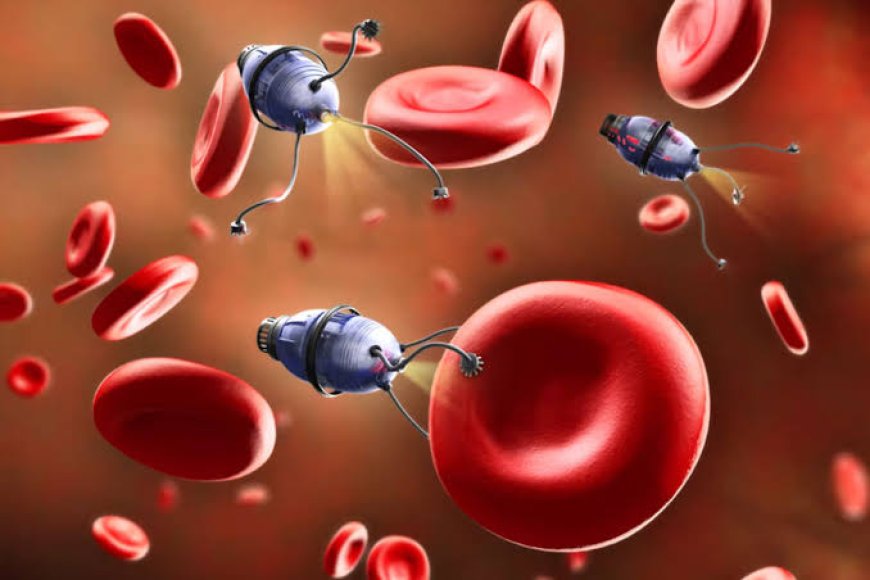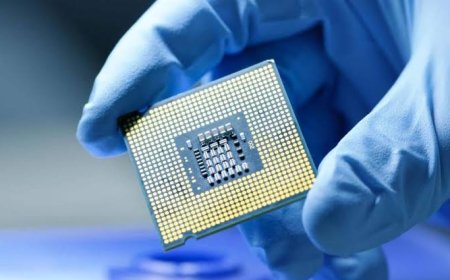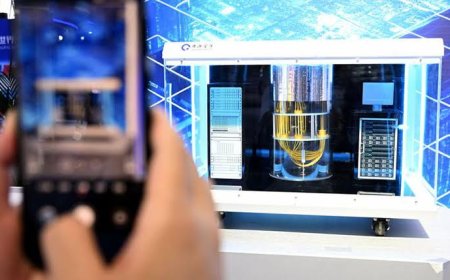Nano robot technology could open up new possibilities in cancer treatment!
A group of researchers at Sweden's renowned research institute Karolinska Institutet recently achieved a breakthrough in cancer treatment. They have developed a type of high-tech tiny nanorobot that can find and destroy cancer cells in an animal's body, without harming the healthy cells around it.

This newly invented experimental nanorobotic technology in cancer treatment is being seen as a huge achievement in medical science. In fact, this Karolinska Institute is located in the Solna area of Stockholm, Sweden. It is a leading institution in medical research worldwide and is where the Nobel Prize in Medicine is awarded.
Researchers involved in this project say that this special nanorobot works like a "smart missile" or smart missile in the animal's body. It is made using DNA and amino acids. This tiny robot can move around inside the body and specifically identify cancer cells or tumors and start working to destroy them.
The research is being conducted by Professor Björn Högberg and his team at Karolinska Institute. He is a researcher in the Department of Medical Biochemistry and Biophysics. He has been working on DNA-based nanotechnology for a long time. The research was conducted with the support of the European Research Council (ERC), the Swedish Research Council, the Academy of Finland and the Knut and Alice Wallenberg Foundation.
They have created a type of smart nanorobot using nanotechnology called DNA origami, which is active only in destroying cancer cells, but does not harm healthy cells. And the results of this scientifically proven research were published in the world-renowned scientific journal Nature Nanotechnology in April 2024.
Through this technology, a very small robot or structure is created by folding DNA, which can carry drugs and start working when it reaches a specific location. In this case, it is claimed that it greatly reduces the possibility of damage to good cells in the body and is able to greatly increase the effectiveness of cancer treatment.
The nanorobot looks like a small locked box, which contains weapons to destroy cancer cells. This lock opens only when it reaches the vicinity of tumors or cancer cells. Usually, the pH level (acidic level) of this area is lower than in other parts of the body. The nanorobot senses that acidic environment and opens the weapon and starts destroying the cancer cells.
This nanorobot or weapon is made of six peptides, which together form a hexagon. This structure activates the "death receptor" of the cancer cell, causing the cell to shrink and die. In the future, there are plans to add more advanced proteins or peptides to the robot to increase its effectiveness. So that it can find and work more accurately on cancer cells.
Professor Hogberg said that if these peptides were applied directly to the body, healthy cells could also be damaged. So they have created a nanorobot that activates the drug or weapon only around the cancer cells. This greatly reduces the risk of side effects in other parts of the body.
Scientists believe that this technology can be much safer and more effective than chemotherapy in cancer treatment. Because conventional chemotherapy affects the entire body and sometimes has serious side effects. Scientists are hopeful that nanorobot technology can greatly reduce that risk.
Researchers have found in the laboratory that the nanorobot is inactive in a normal environment (pH 7.4), but it can be activated in the acidic environment of cancer cells (pH 6.5) and identify and destroy cancer cells. This research has already been tested in mice. Nanorobots were injected into mice with breast cancer and it was seen that tumor growth was reduced by about 70%.
Yang Wang, the first author of the study, said that their main goal now is to work with more complex cancer models, which may be very close to human cancer diseases. In addition, the possible side effects of this technology will also be closely monitored and analyzed before being applied to the human body. Which will be a long-term and ongoing process.
As a novel discovery in cancer treatment, this nanorobot technology is currently being patented, so that it can be used in clinical treatment in the future. Although this long-term research is still in its early stages, experts say it could open up a new, safe and effective avenue for future cancer treatment.
Sources: Nature Nanotechnology, Karolinska Institute, Interesting Engineering, ScienceAlert.


















































